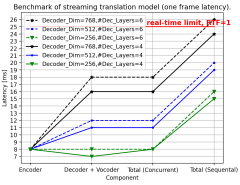Authors: Haoyu Lu, Wen Liu, Bo Zhang, Bingxuan Wang, Kai Dong, Bo Liu, Jingxiang Sun, Tongzheng Ren, Zhuoshu Li, Yaofeng Sun, Chengqi Deng, Hanwei Xu, Zhenda Xie, Chong Ruan
Published on: March 08, 2024
Impact Score: 7.8
Arxiv code: Arxiv:2403.05525
Summary
- What is new: The introduction of DeepSeek-VL as a versatile Vision-Language Model specifically designed for real-world applications, featuring a hybrid vision encoder and integration with language model training from the outset.
- Why this is important: Existing VL models struggle with diverse, real-world scenarios and maintaining efficiency while processing high-resolution images.
- What the research proposes: DeepSeek-VL employs a hybrid vision encoder for efficiently handling high-resolution images and integrates language model pretraining to ensure strong language abilities.
- Results: DeepSeek-VL demonstrates superior performance as a vision-language chatbot and achieves state-of-the-art results across multiple visual-language benchmarks, with both 1.3B and 7B models publically available.
Technical Details
Technological frameworks used: DeepSeek-VL, an open-source Vision-Language Model
Models used: 1.3B and 7B model variants
Data used: Diverse datasets covering web screenshots, PDFs, OCR, charts, and knowledge-based content
Potential Impact
Technology companies focusing on AI-driven applications, particularly in vision and language understanding, could be disrupted or benefit, including chatbot services, search engines, and content management systems.
Want to implement this idea in a business?
We have generated a startup concept here: VisionaryAI.




Leave a Reply